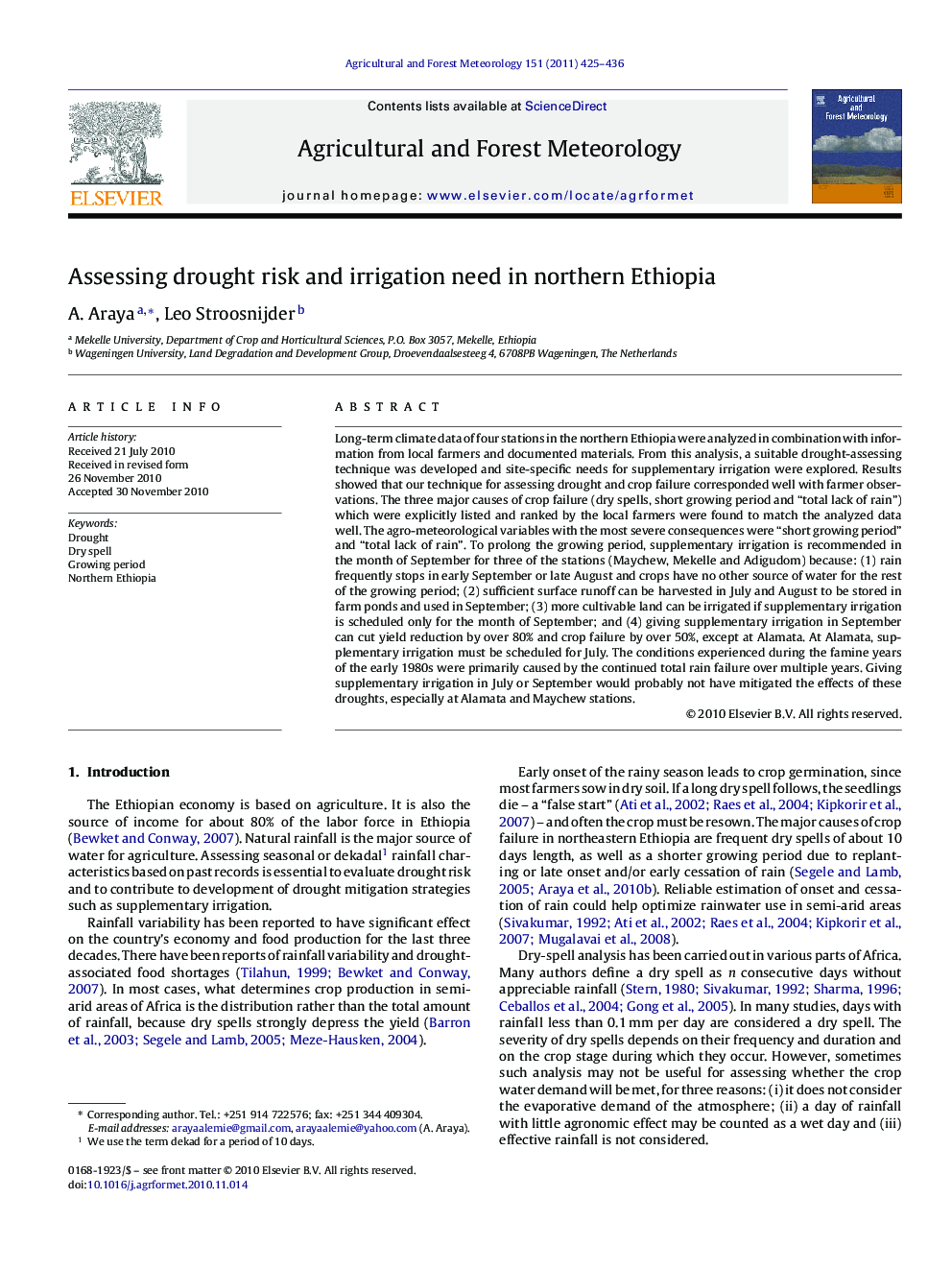| Article ID | Journal | Published Year | Pages | File Type |
|---|---|---|---|---|
| 82070 | Agricultural and Forest Meteorology | 2011 | 12 Pages |
Long-term climate data of four stations in the northern Ethiopia were analyzed in combination with information from local farmers and documented materials. From this analysis, a suitable drought-assessing technique was developed and site-specific needs for supplementary irrigation were explored. Results showed that our technique for assessing drought and crop failure corresponded well with farmer observations. The three major causes of crop failure (dry spells, short growing period and “total lack of rain”) which were explicitly listed and ranked by the local farmers were found to match the analyzed data well. The agro-meteorological variables with the most severe consequences were “short growing period” and “total lack of rain”. To prolong the growing period, supplementary irrigation is recommended in the month of September for three of the stations (Maychew, Mekelle and Adigudom) because: (1) rain frequently stops in early September or late August and crops have no other source of water for the rest of the growing period; (2) sufficient surface runoff can be harvested in July and August to be stored in farm ponds and used in September; (3) more cultivable land can be irrigated if supplementary irrigation is scheduled only for the month of September; and (4) giving supplementary irrigation in September can cut yield reduction by over 80% and crop failure by over 50%, except at Alamata. At Alamata, supplementary irrigation must be scheduled for July. The conditions experienced during the famine years of the early 1980s were primarily caused by the continued total rain failure over multiple years. Giving supplementary irrigation in July or September would probably not have mitigated the effects of these droughts, especially at Alamata and Maychew stations.
Research highlights▶ The new method for assessing drought risk is proven to be suitable and reliable indicator of crop failure especially in places where the water holding capacity of soils is reduced by land degradation like the case of north Ethiopia. ▶ About 36–59% of the past seasons in the study area were drought seasons (crop failure). This was attributed to three major agro-meteorological factors. These are: (1) intra-seasonal dry spells; (2) too short growing period and (3) total failure of rains. ▶ Supplementary irrigation targeted at the decades in September was found to be most promising to minimize drought that occurred due to the too short growing period and dry spells because (1) rain frequently ceases in early September; (2) sufficient surface runoff can be harvested in July and August to be stored in farm ponds and used for irrigation; (3) more cultivable land can be irrigated if supplementary irrigation is scheduled only for September. ▶ Failure of rain associated to large scale and small scale climate shift has caused devastating droughts over the 1980s in the study area. The 1984/85 famine was the effect of the year to year cumulative occurrence of total failure of rain. However, the droughts over the 1980s in the study area were very severe and might have not been mitigated with the provision of supplementary irrigation targeting only for the month of September. ▶ Out of the total yield reduction and crop failure seasons which occurred due to water stress, more than 80% of yield reductions and more than 50% of the crop failures respectively could have been avoided if adequate irrigation supply was made for the decades in September over the study area with exception to one station, Alamata.
